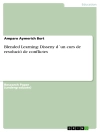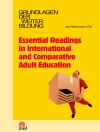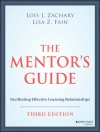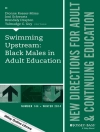This survey provides unprecedented scope and detail of analysis on higher education in the Asia-Pacific region. In this era of global integration, convergence and comparison, the balance of power in worldwide higher education is shifting. In less than two decades the Asia-Pacific region has come to possess the largest and fastest growing higher education sector on Earth. The countries of East and Southeast Asia and the Western Pacific together enrol 50 million tertiary students, compared to 14 million in 1991, and will soon conduct a third of all research and development. In China, Hong Kong, Taiwan, Korea and Singapore, ‘world-class’ universities are emerging at breakneck pace, fostered by modernizing governments that see knowledge and skills as key to a future shaped equally by East and West, and supported by families deeply committed to education.
But not all Asia-Pacific countries are on this path, not all reforms are effective, and there are marked differences between nations in levels of resources, educational participation, research, state controls and academic freedom. Higher Education in the Asia-Pacific: Strategic responses to globalization provides an authoritative survey of tertiary education in this diverse and dynamic region. Its 23 chapters, written by authors from a dozen different countries, focus successively on the Asia-Pacific as a whole, the strategies of individual universities, and national policies and strategies in response to the global challenge.
Spis treści
Preface.- Acknowledgements.- Editors and authors.- List of figures and tables.- INTRODUCTION .- 1. Local, national, and global in the Asia-Pacific; Simon Marginson, Sarjit Kaur and Erlenawati Sawir.- PART I. GLOBAL AND ASIA-PACIFIC PERSPECTIVES .- 2. Asia-Pacific universities in the global space: Visions of university presidents; Simon Marginson.- 3. The Confucian Model of higher education in East Asia and Singapore; Simon Marginson.- 4. The disappearing role of education finance policies in higher education access: Panel data analysis of twenty-one Asia-Pacific countries in a global setting; Lijing Yang.- 5. Transnational higher education in the Asia-Pacific region: From distance education to the branch campus; Christopher Ziguras and Grant Mc Burnie.- 6. International student mobility in the Asia-Pacific: From globalization to regional integration?; Christopher Ziguras and Grant Mc Burnie.- PART II. LOCAL ASIA-PACIFIC STRATEGIES .- 7. Advanced global strategy in China: The case of Tsinghua; Rui Yang.- 8. Negotiating globalization: The Royal University of Phnom Penh, Cambodia; David Howes and David Ford.- 9. Universiti Sains Malaysia: Its strategic response to globalization; Sarjit Kaur, Morshidi Sirat and Norpisah Mat Isa.- 10. Globalization, resources and strategies: A comparison of Universitas Indonesia and the Australian National University.- Simon Marginson and Erlenawati Sawir.- PART III. NATIONAL ASIA-PACIFIC STRATEGIES .- 11. Addressing the global challenges in higher education: The Malaysian strategic plan; Gurnam Kaur Sidhu and Sarjit Kaur.- 12. Academics as agents of internationalization and literacy: Malaysian responses and future challenges: Koo Yew Lie and Vincent Pang.- 13. The global schoolhouse: Governing Singapore’s knowledge economy aspirations; Ravinder Sidhu, Ho Kong Chong and Brenda Yeoh.- 14. Strategies for higher education reform in Thailand; Nattuvud Pimpa.- 15. National policies in skilled labour and the cross-border student market, with a focus on Vietnam; Cate Gribble.- 16. Two-way flows of higher education students in mainland China in a global market: Trends, characteristics and problems; Mei Li and Yongjun Zhang.- 17. The internationalization of Japanese higher education: Policy rebates and realities; Akiyoshi Yonezawa.- 18. Internationalization of Japanese universities: The current status and future directions; Kazuhiro Kudo and Hiroko Hashimoto.- 19. Higher education in Papua New Guinea: the need for a change towards globalization; Ravinder Rena_20. Global position and position-taking in higher education: The case of Australia: Simon Marginson.- PART IV. NEIGHBOURING CASES .- 21. India amidst a global competition for its talent: A critical perspective on policy for higher and university education; Binod Khadria.- 22. National and global challenges to higher education in Saudi Arabia: Current development and future strategies; Abdullah A. S. Al-Mubaraki.- CONCLUDING REFLECTIONS .- 23. Regional dynamism and regional inequality; Simon Marginson, Sarjit Kaur and Erlenawati Sawir.- Index.












